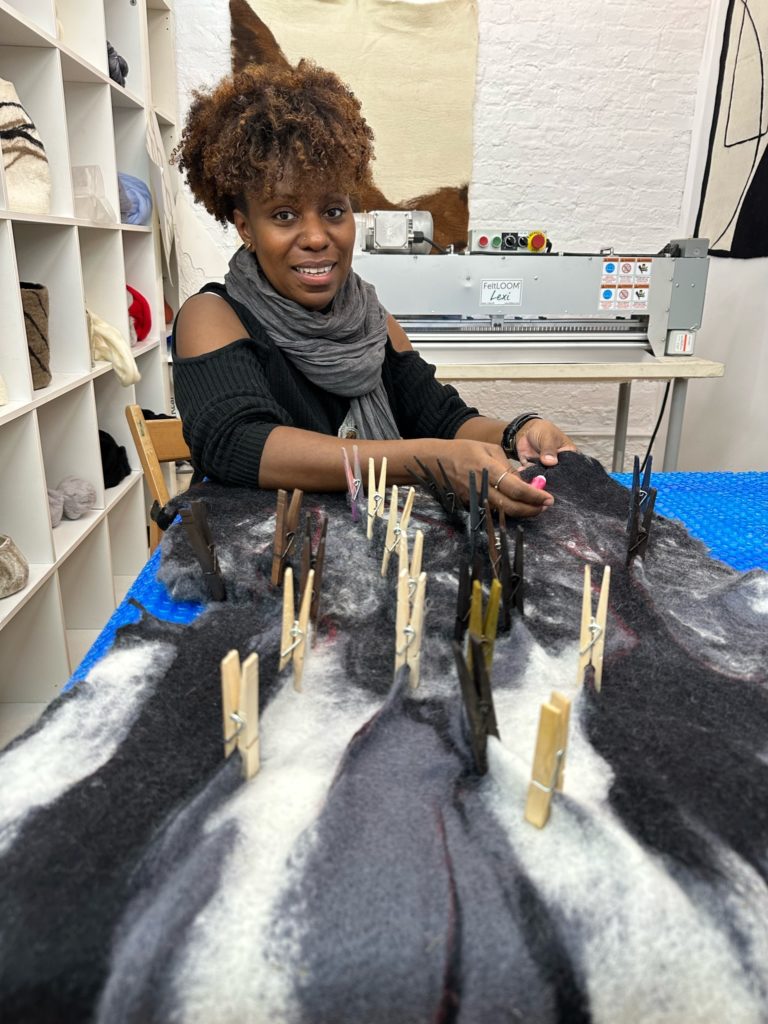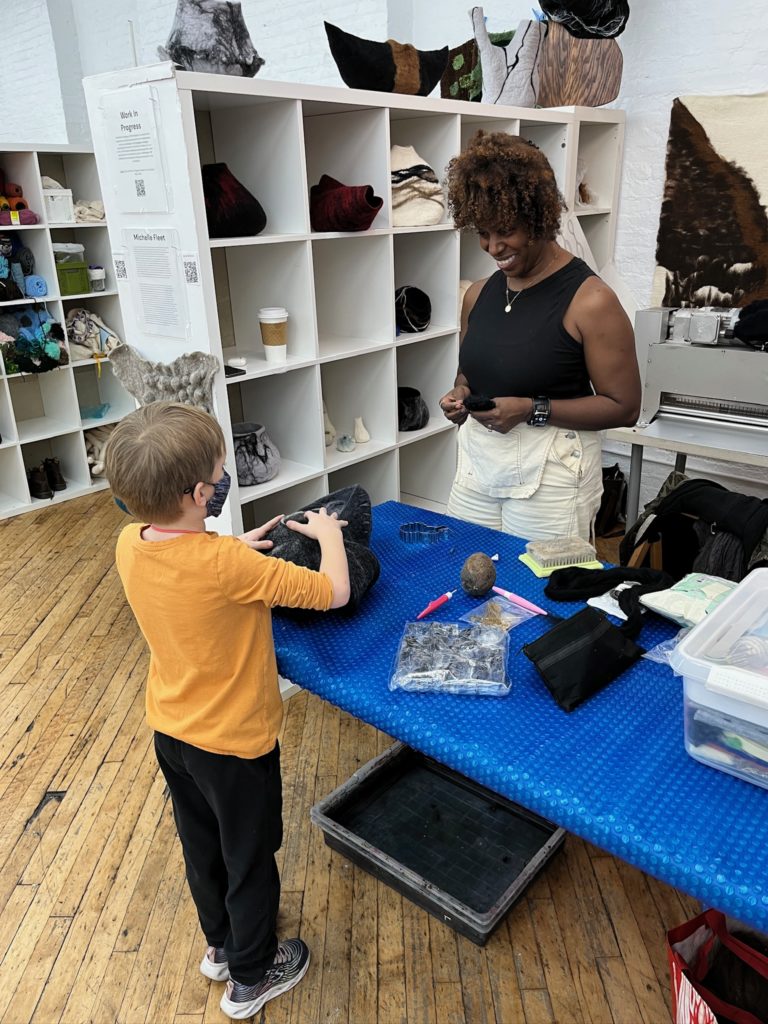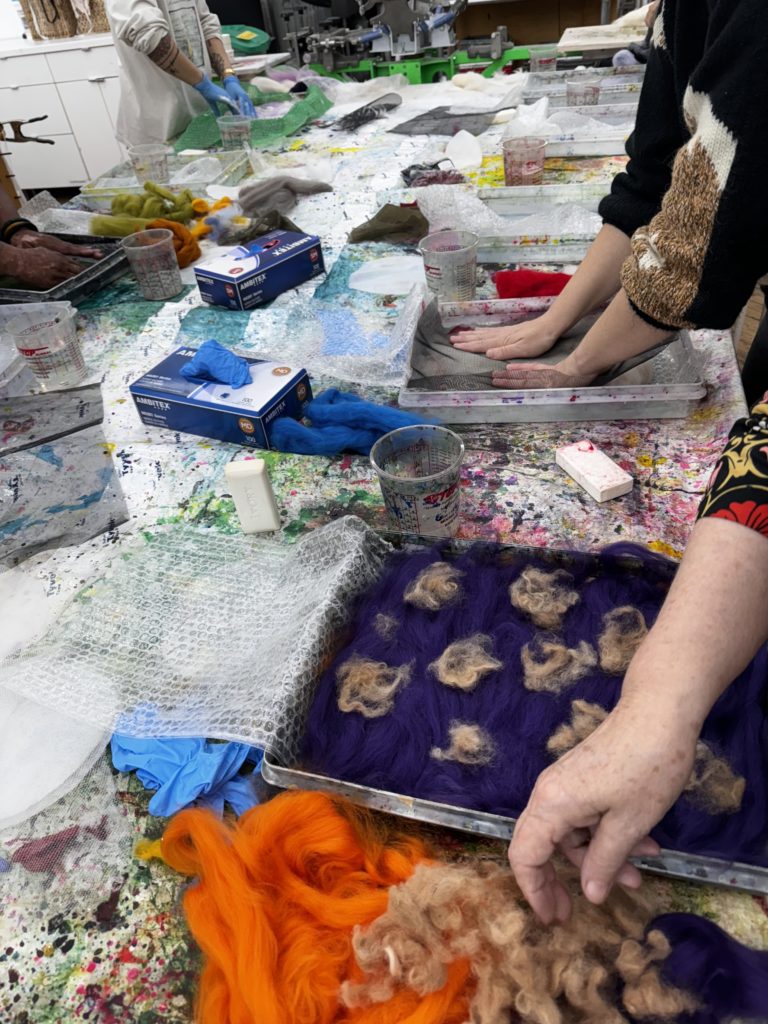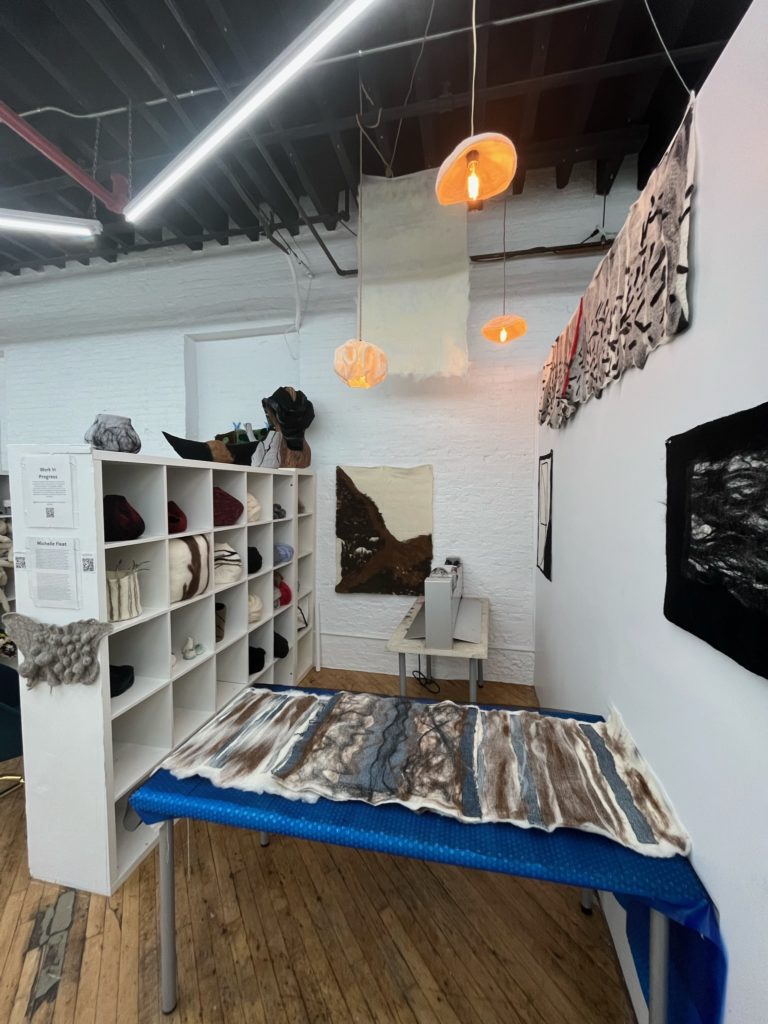WIP Artist Highlight: Michelle Fleet
I sit down with Michelle Fleet over a conversation on fibers, dance, and all that comes in between. We are joined by the chorus of laughter and sound from the children’s day camp that takes place at TAC.
Michelle begins by telling me about her background with textiles and fibers. She said her initial introduction with textiles was making costumes for dance, as well as clothing in general.
“My mom taught me everything, from sewing to crocheting, and creating such fun crafts throughout school.”
She tells me that her entrance into the world of dance brought forth a sense of creativity that was unimaginable, from choreographers, to costume designers, to lighting designers, and that space created a new sense of inspiration to jump back into textiles.
“I would be on tour and I would crochet, and then from that, I taught myself to knit, and I dove so much deeper into fiber. I got into felting by way of knitting. I found felting to be like molding, like playing with clay, but in the realm of fiber. I started with needle felting, and then moved into wet felting.”

Michelle tells me that 10 years into felting, and having retired from dancing in 2019, she dedicated herself entirely to her practice.
“I started by selling at Artist & Fleas, and people were fascinated by the feeling that felt could be so many things, other than a piece of clothing or a hat. From there, I started doing the Artrider Craft Shows, and that’s been a fun process of putting out my work as well.”
I ask her about her transformative process with felt, and what that’s like when using a material that is typically in the form of cloth to make other forms, such as vessels or pillows.

“I had actually seen this process in Europe a lot, so I had studied a few artists that were transforming felt into items, and home decor in particular. I love home decor, and more so, any sort of useful and decorative piece. So I started by teaching how to make a felted purse, and I was drawn towards making a vessel from there. I gravitate towards making items that I would like to see in a store, so that usually manifests in a modern form, in terms of color, and also the shapes and sizes that show up in pottery. This transformative process came about from the desire for something soft in materiality, modern and useful at the same time.”
With modes of pottery and sleek home decor in mind, I ask Michelle about the way in which her modes of inspiration weave its way into practice.
“Some bits of inspiration come through a sketch, sometimes I just start felting and see what comes from that. But I have notebooks, magazines, scrapbooks of images that I usually gravitate towards, in terms of forming baseline ideas and themes. I look at other artists as well, like right now I can’t stop looking at Noguchi, but that’s because of his relation to the Martha Graham Dance Company. So I look at whatever avenue comes up at any moment.”
Speaking of dance, I ask about going from the realm of performance art to textile art, and what overlaps or ties they have with each other as art practices.
“With dance, the tool is the body, so everything is a regiment to take care of the body. And with the body, I am expressing the vision of the choreographer, but I am also trying to express my own voice at the same time. With textiles, there are more hard rules, but there’s a greater ability of finding expressions within the realm. Both mediums, both worlds take trial and error, and room for improvisation to figure out what works.”
She tells me about this elemental and meditative process with felting, that utilizes the body in a different manner as it would for dance.
“I lay out each fiber carefully when I felt. I wet the fiber. I apply heat. I have the friction that is created. The physical rolling and throwing of the piece, so there’s this very active role that comes along, even while working with textile. My body works here to transform a piece of fiber into a final work, so it’s an incredible sight.”

Overlaps and overlaps.
We talk about the overlaps and decisions that come about when she makes pieces for her business, Suri & Caya, compared to work that she makes for herself.
“For Suri & Caya, I want to create pieces that are accessible to people, and I predominantly sell smaller vessels, pillowcases, throws, and garments. Every once in a while, I’ll add in a larger, more elaborate vessel, but it varies. For myself, and for the sake of showing, I create, and see what comes from that.”
I ask Michelle about any thoughts on collaborative processes with her work and what that could look like.
“I haven’t thought about much yet, but I am looking at it from the angle of approaching several mediums, so felting a piece and then take it to be naturally dyed, or to be beaded, or sewed. There are endless possibilities here at TAC just based on the personal practices of everyone around here.”
We tap into documentation, and specifically the process of documentation from dance as a practice to fiber as a practice.
“For fiber, it’s been through photographs, and I’ve been able to see the transformations of my practice. I keep my sketches on my notebook, my wall, my phone, but I would really love to show these bits of documentation as works of art on their own, because they paint the entire story of a dynamic process. I tend to document what I was feeling, whom I was around, what was happening around me, all in that moment in time, so I can see why I made what I made in a certain instance.”
We finally touch on how her work would be presented, considering its strong tactile nature.

“I would like to have a show set up as a maze, so someone can feel their way through and feel the different textures and materiality and sizes of different pieces. So right now, I am working on pieces that can be shown, so I’m working on a vessel that takes the form of a shell, but can be manipulated into different shapes. I am trying to tap into bigger scale sculptures and seeing how I can play around with materiality there. But it’s all working towards a gallery showing format.”